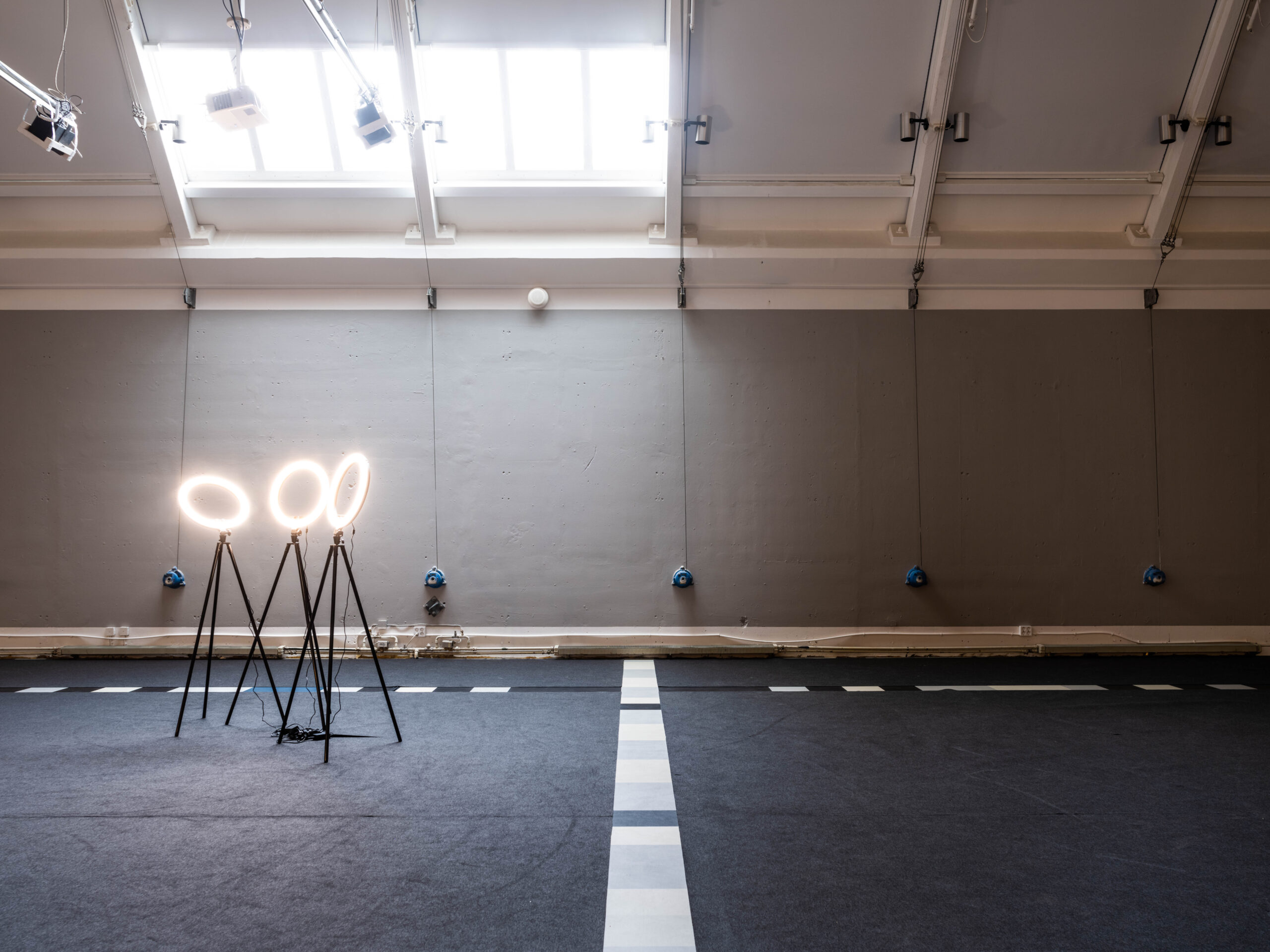
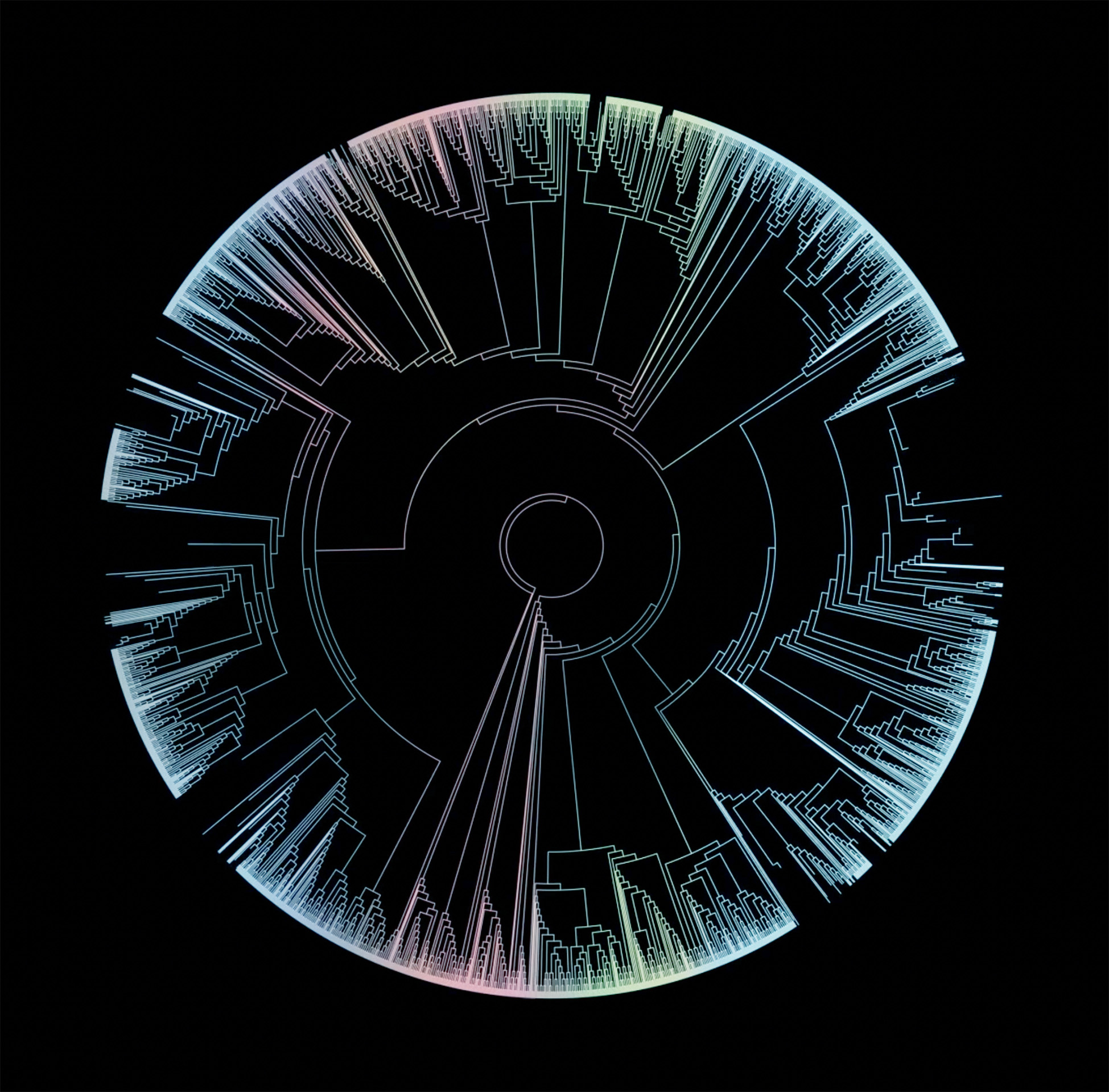

Wednesdays- Fridays 12-18, Saturdays: 12-15
Sculpture and video
Katarina Löfström primarily works with video, digital animations, audio interactivity, and sculptural installations. In her work, an exploration of art’s inherent capacity to break free from traditional patterns of behavior and rational thinking returns. She has an MFA from Konstfack in Stockholm and her work has been presented in solo exhibitions at Index, Norrköping Art Museum, Skellefteå Kunsthalle Malmö Kunsthalle and Uppsala Art Museum, among others.
Katarina Löfström is represented by Andréhn-Schiptjenko in Stockholm.
Program: Thursday 27 April at 5-7pm, Katarina Löfström will show some of her films from the years 2000-2013 in collaboration with Filmform.

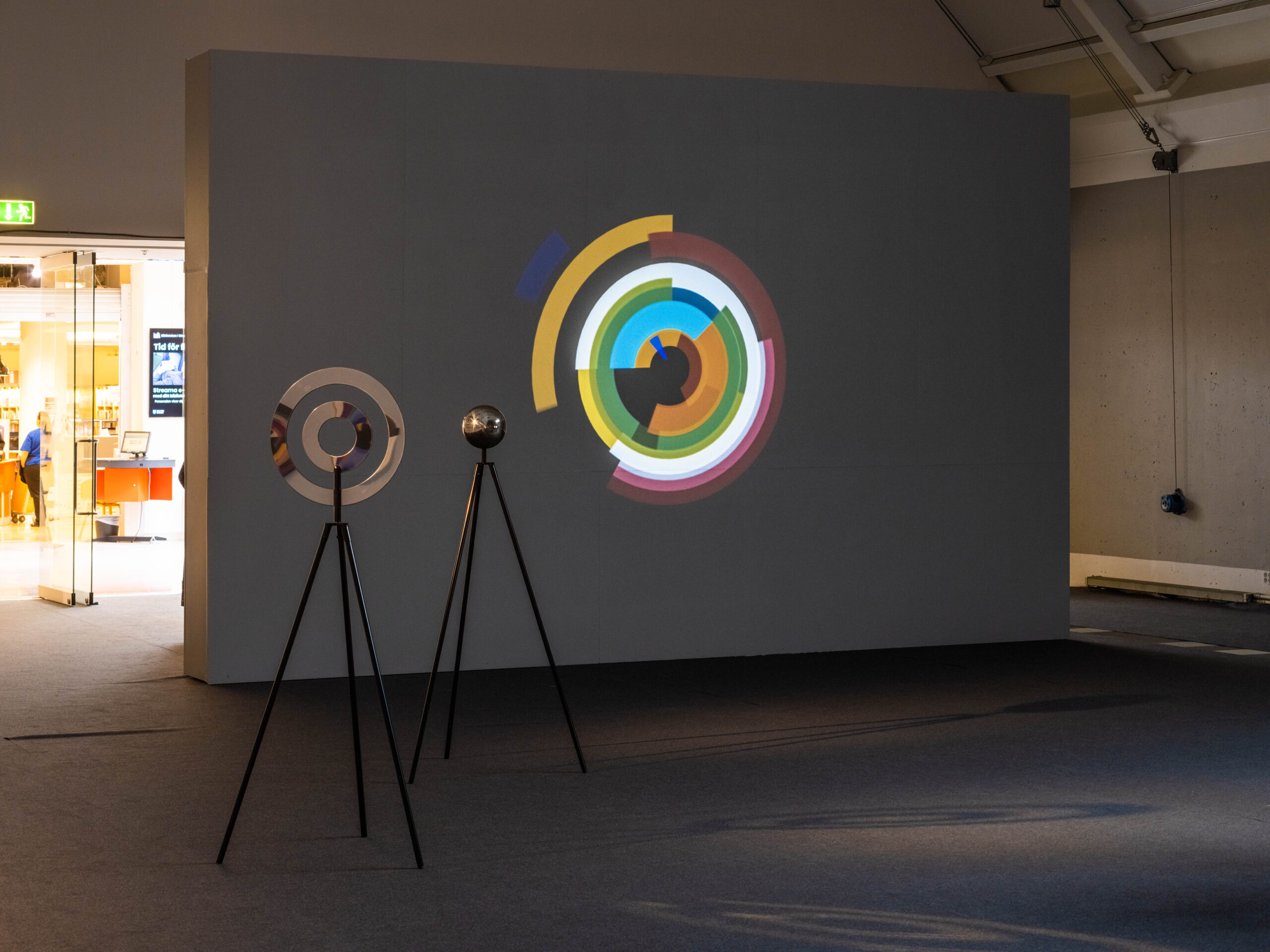
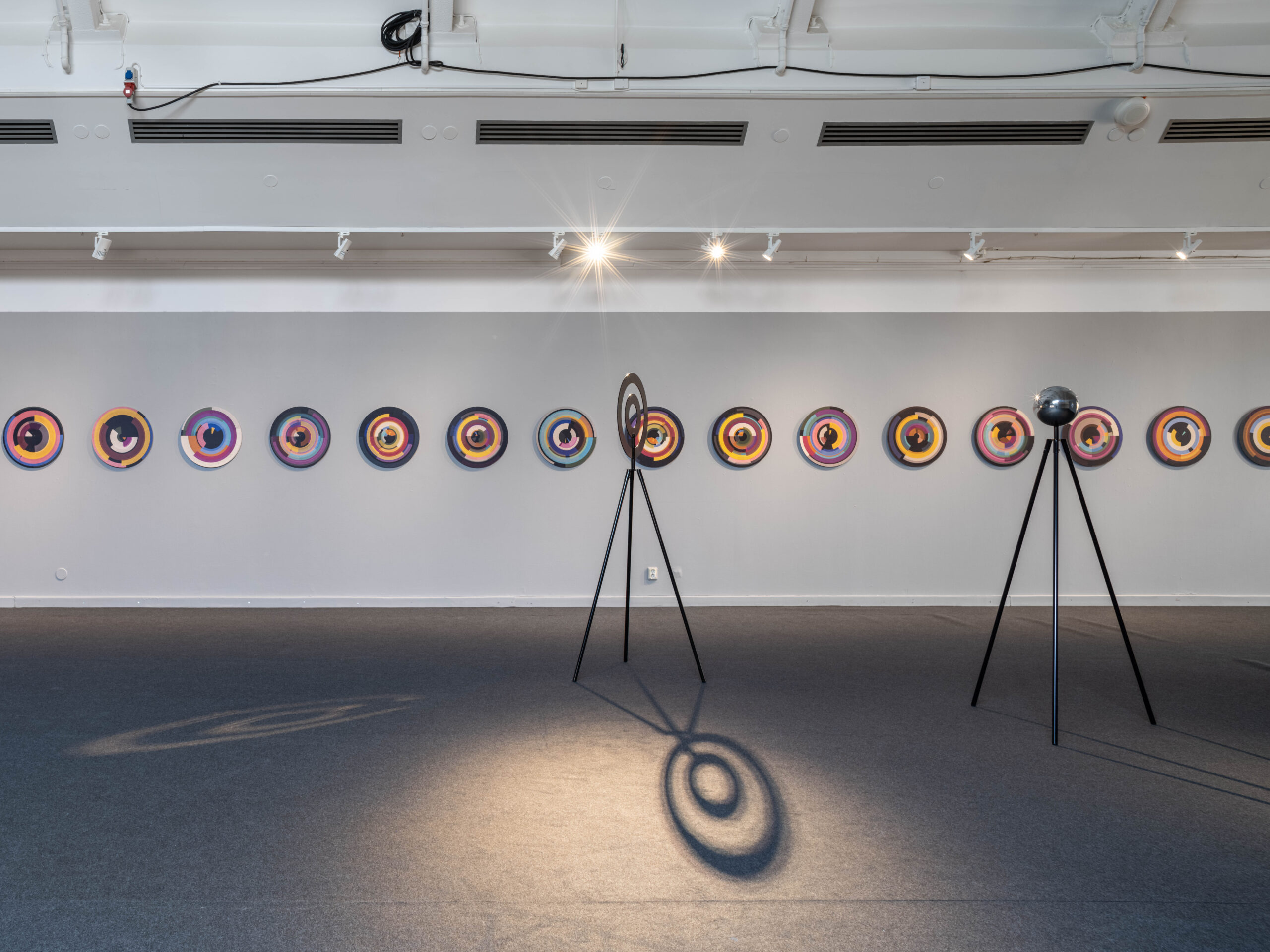
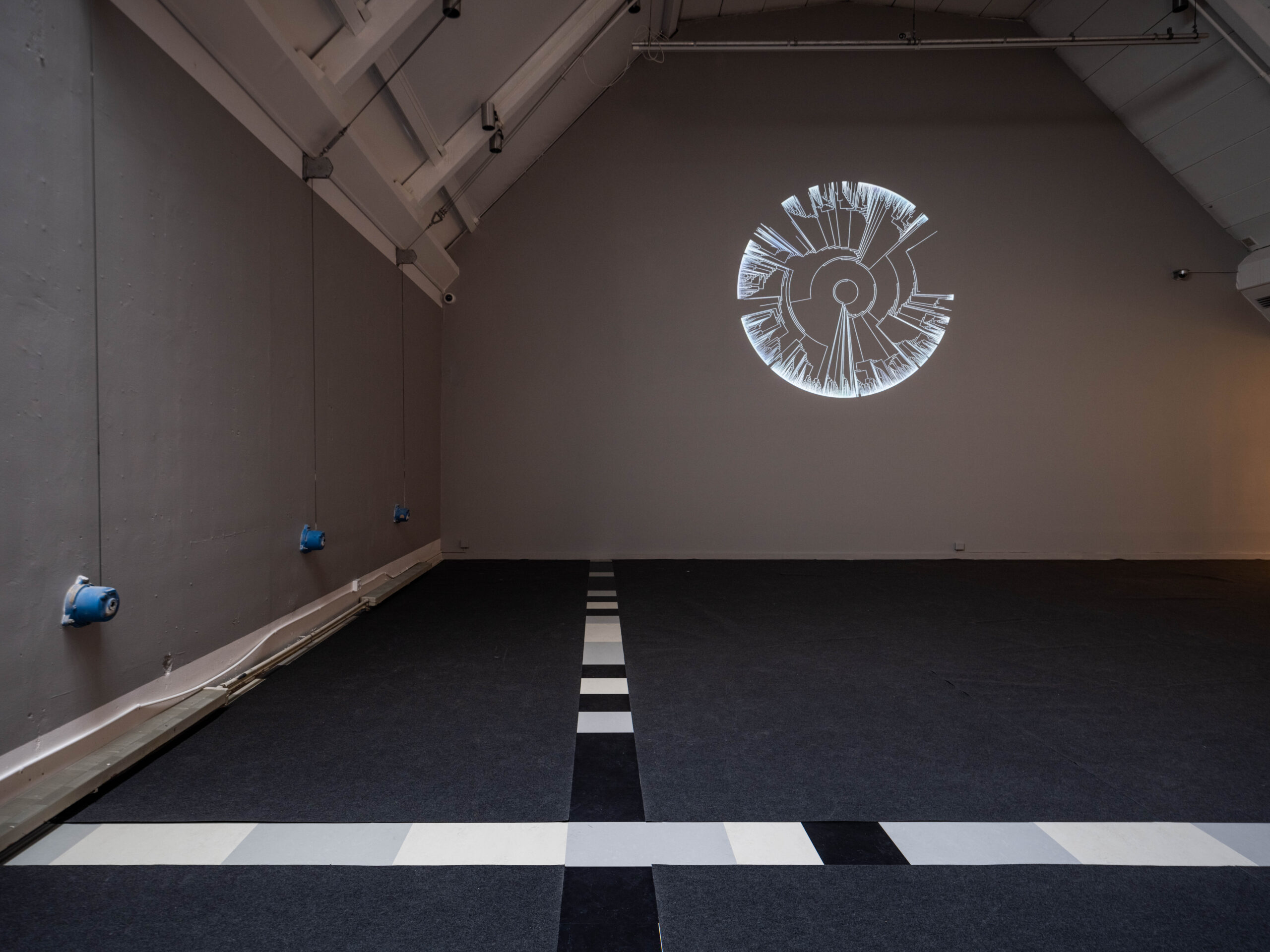
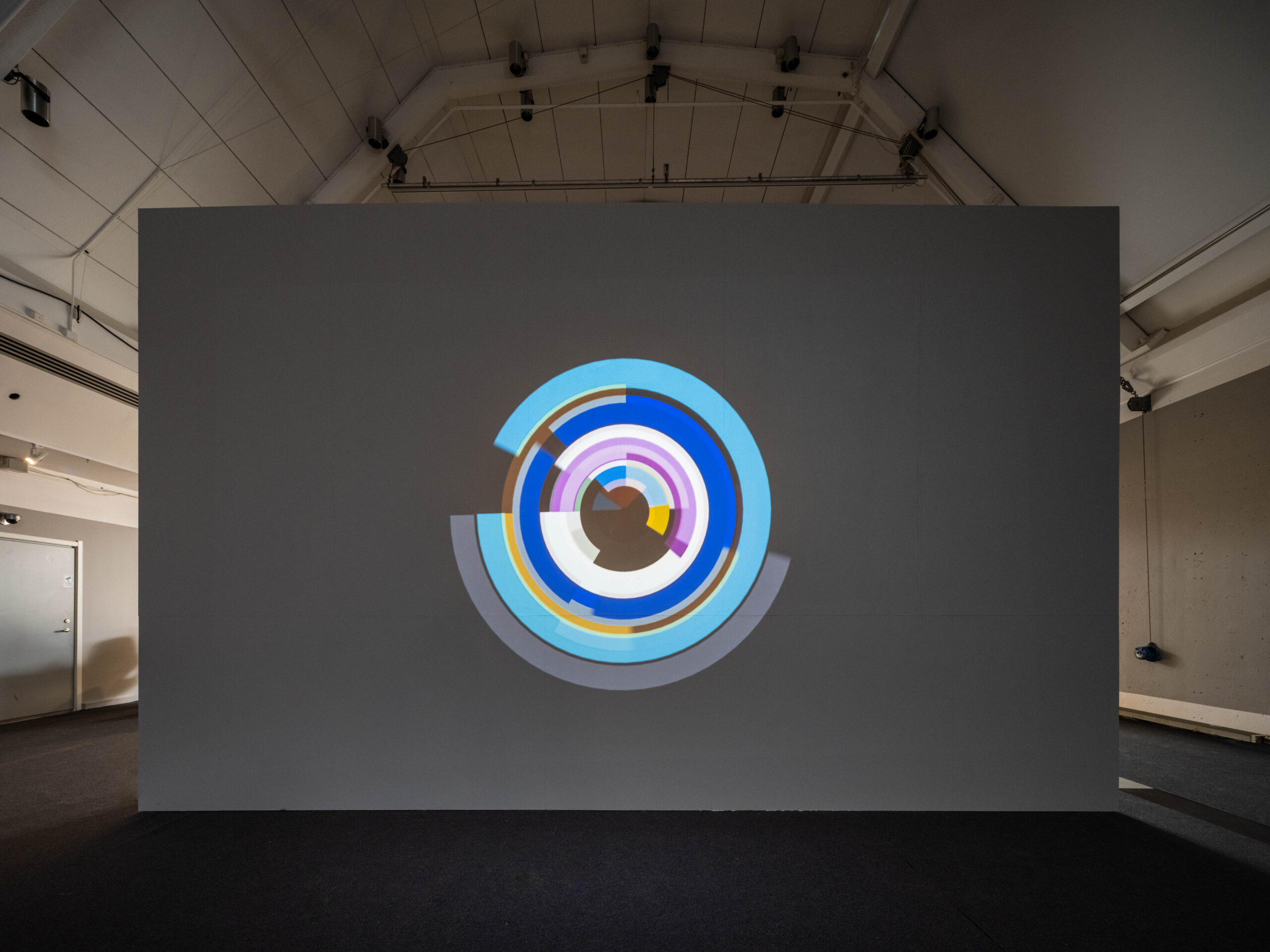
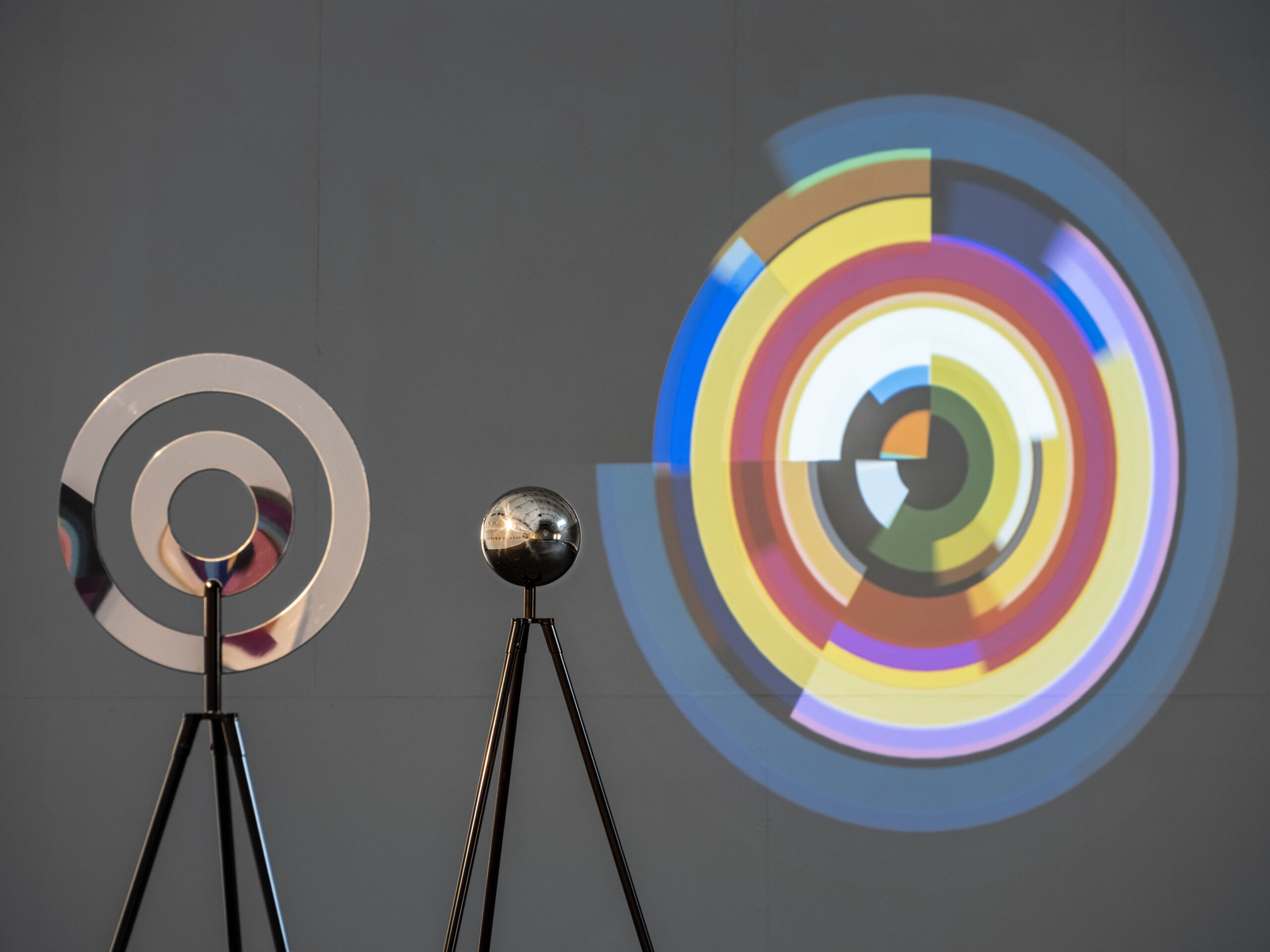
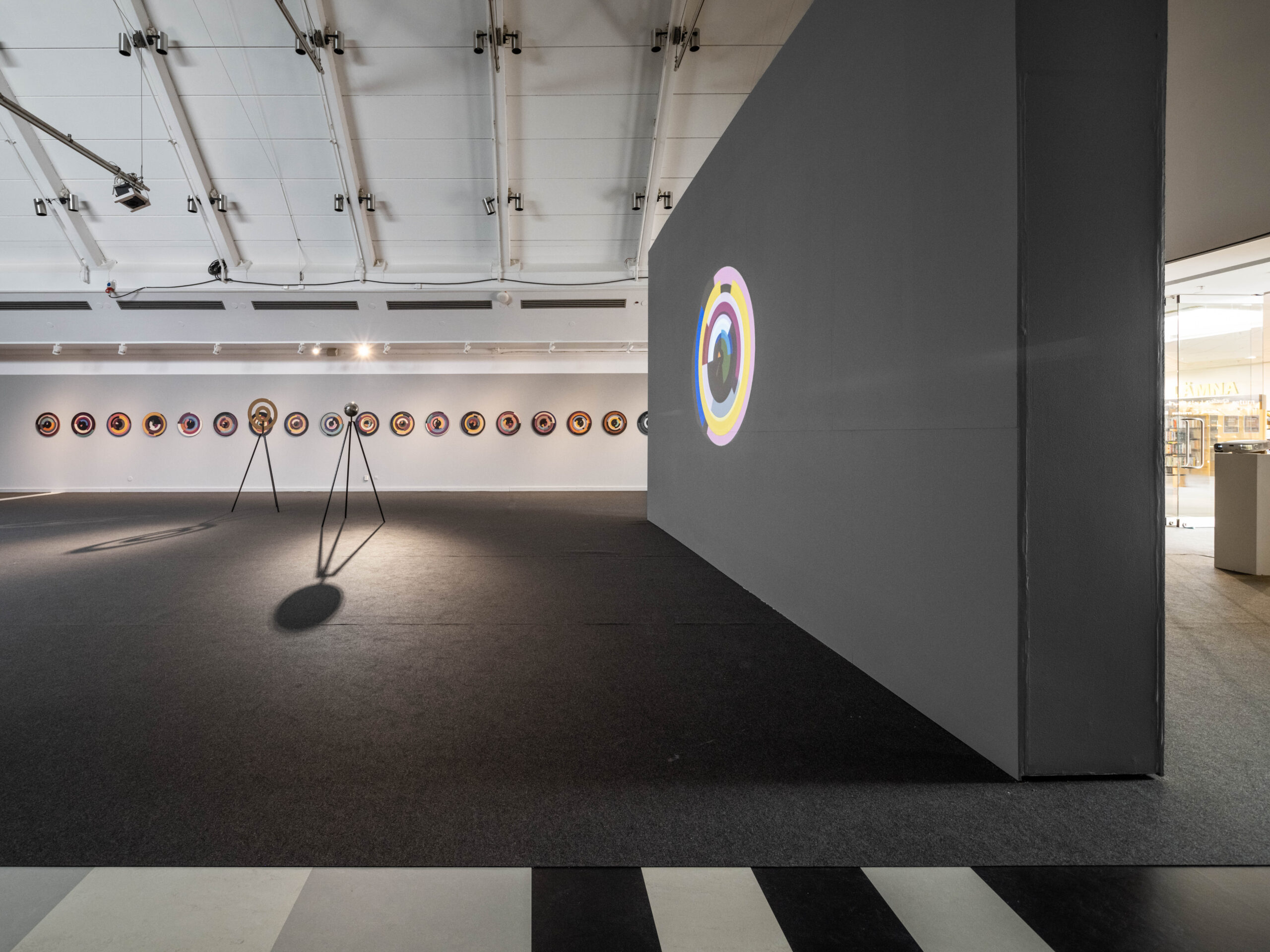
Photo: Jean-Baptiste Béranger
The Bigger Picture – Katarina Löfström. Text by Joana Sandell
Artist Katarina Löfström navigates natural phenomena and digital domains in ways that only a few master, in her world they are one. For more than two decades Katarina has been active internationally and in Sweden, some know her from the sculpture park Wanås Konst in the deep woods of beech trees in the south of Sweden where the artwork Open Source (Cinemascope) mirrors trees, sunlight, maybe even the actual chlorophyll itself in a panoramic screen of moving sequins. Others might have heard about the work Coloratura in the concert hall of Uppsala where concerts are choreographed through interactive, coloured lights.
It is fair to say that two of Katarina’s video works are almost iconic for their time. The videos Hang Ten Sunsetand Whiteout from early 2000s tie aspects of seeing, art history and memory together. Hang Ten Sunset can in many ways be seen as a digital Mark Rothko, the Lithuanian artist who during a lifetime of painting horizontal stripes so powerfully that they seemed to burn into the memory of anyone who spent time viewing the paintings. In the artwork of Katarina the sunset becomes abstract through moving horizontal stripes of colour. The effects of the artwork bring to mind another well-known artist that has explored the spiritual currents of colour and light, James Turell. But equally important to colour and light is the soundtrack of Hang Ten Sunset. The sound is a techno-beat by Plastikman and through situating the artwork in a popular context Katarina pushes art towards a broader space where the club, the dance floor and the dj-booth become arenas of equal footing to the gallery space or the museum. “A failed musician” Katarina calls herself, she makes art as a substitute for playing music.
One of the many references that make up the sources of inspiration is a movement that existed in Europe before the wars, they called their art “visual music” and among the followers were musicians such as Viking Eggeling and artists like Georgia O’Keeffe. Within visual music the search consisted of finding the purest form of abstraction in art. What could visual music potentially look like? Light and film were components in working with visual music, and music was seen as the most complete form of abstract art. Katarina talks about Oskar Fischinger, an animator and film maker from Germany that created his own colour film so that he could make abstract film in connection to music – visual music.
A driving force of Katarina is creating something visual that cannot be created musically. In the artwork Whiteout from 2001, the research consists of exploring what happens when sunlight meets the eye. Deeply personal, sensory experiences of looking directly at the sun is given form. (This should not be tried at home!)Katarina talks about the so called entopic phenomena that all of us can experience at given times. It is the brain creating geometric shapes such as zigzags, points, circles and rhombi when we are about to fall asleep or when we are meditating. Entopic phenomena can also become visible to us when we fall sick or get a fever, if we become psychotic or if we take drugs.
In the art of Katarina we are invited to explore her research around material and ideas, often in relation to cultural heritage, both of contemporary and historical character. In a series of works that explore the imagery of buoys and beacons out at sea the main source of reference is the abstract pioneer artist Hilma af Klint. Katarina saw a resemblance between early symbols used for navigation and the motifs in Hilma’s paintings. Through a closer reading of Hilma’s biography Katarina connected the fact that Hilma came from a family of sea farers and cartographers, and that an artwork in Hilma’s world also functions as a spiritual guide map. In the exhibition The Bigger Picture, this series is represented by the sculpture Aim (Anagram), created from rounds mounted on three legs. In the thought of Katarina there are quick leaps between images and their meaning, she gives us no answers and refrains from simple moral judgements, images and thought are allowed complexity and hidden messages. Paradoxes and loops reoccur, both through language and imagery. How can we create an understanding of the world through the small fragments of information that our senses offer us? Or in other words, how to reach The Bigger Picture?
Central to Katarina is a fascination for deep and primal stories, the ancient forms, as she puts it. In Södertälje konsthall the circle is a reoccurring form, also in narration as every video consists of a loop, the work unfolds and returns from its ending to the beginning, just as the cycles of nature. In several sculptures the target as a sign comes forth through suggestion, as abstract art but also to point out a direction, as when hunters train their aim in preparation of the kill – the ultimate boundary between existence and disappearance. What happens when the eye moves into focus toward a target or a prey when hunting, or when consciousness is directed inwards or towards something greater when in meditation or prayer? Katarina talks of her explorations of concentration and direction, thematically she returns to nature in the monumental video work Vanitas (Loop). The viewer is met by an enormous circle formation inspired both by the mandala and the target. What we see in the video is the expansion of living organisms on earth, plants and animals on our planet form the time it was created. The circular diagram expands until it reaches the age we are currently in, then it starts to shrink. In a train of associative thought around diagrams and cyclical movement we become aware of the earth’s, and our own precariousness and fragility.
In the work Chronos, Kronos! the circular formation gestures towards the mandala is repeated, but in terms of image there is also a suggestion of the planning tools used in corporate time management to optimize reaching goals and higher performance.
In contrast to the form of the circle in The Bigger Picture there is a tear in the carpet, two crossed lines that open to reveal the artwork Opacity – (for Édouard Glissant) by Laercio Redondo and Birger Lipinski. The slit in the carpet is also an artwork by Katarina by the title Inklings. Katarina’s art is seldom isolated in relation to the space where it is located, whether it is shown outdoors or in an exhibition space. The cross formation that is created by forcing itself into the architecture of the art space, but also our contemporary art canon by exposing the work of Laercio and Birger, builds and feeds on the fact that Katarina is inside a continues circular game around symbols, directions, movements, and relations. Fragments of the underlying floor pattern are revealed as a code, simultaneously possible and impossible to decipher.